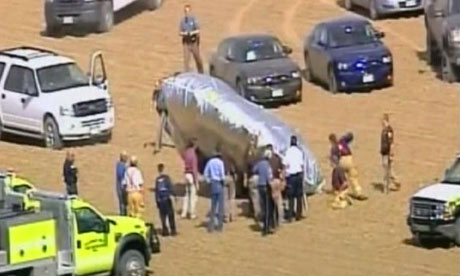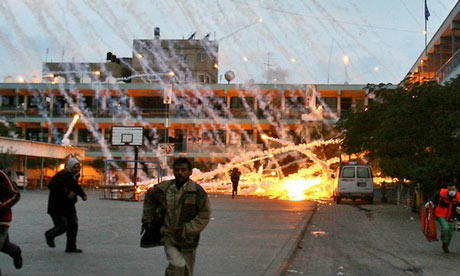
A wave of Pakistani Taleban attacks over the last 11 days shows that the militant network is more dangerous than ever, despite the death of its charismatic leader in August and the apparent success of the army’s six month campaign in the northwest.
It also suggests an unprecedented level of cooperation between Pashtun militants in north-western Pakistan, Al Qaeda and other foreigners sheltering there, and militant groups based in Punjab - the country's most populous province.
And it shows, more vividly than ever, that Pakistan’s security forces - including the powerful army - are unable even to protect even their own headquarters against the militants, many of whom have military training themselves.
Today's triple attack on law enforcement buildings in Lahore coincided with a suicide bombing in the northwest and followed a weekend raid on the army headquarters and two more suicide bombings last week. The militants’ immediate aim is clear: to discourage the army from launching an imminent ground assault on the tribal region of South Waziristan - the main stronghold of the Pakistani Taleban and its closest allies.
The Pakistani Taleban has already suffered one major setback this year when they advanced into the north-western region of Swat - getting to within 60 miles of the capital, Islamabad - only to be driven out by the army.
The government announced the South Waziristan operation in June and, ever since, the army has been moving troops into the area, blocking the roads around it and pounding militant hideouts with air strikes and artillery.
Early this month, the government and the army began saying that preparations for the operation were complete and it would start imminently. That is when the wave of Taleban attacks began.
The Taleban has also made several public statements, warning clearly that the assault on South Waziristan will trigger further militant attacks across Pakistan, where it now claims to have branches in all major regions.
What is less clear is whether they are doing this from a position of strength, having re-grouped since the death of Baitullah Mehsud, their former leader, or out of desperation in the face of imminent defeat in South Waziristan.
When Mehsud was killed by a US drone strike in August, it was prematurely hailed as a death blow for the Pakistani Taleban, which he founded and used to carry out dozens of attacks against targets in Pakistan.
There were unconfirmed reports of a violent leadership struggle within the Taleban, in which several potential successors had also been killed, including Wali-ur Rehman and Mehsud’s brother, Hakimullah.
Ten days ago, however, Hakimullah Mehsud made a public appearance at which he claimed the Taleban leadership and threatened to avenge his brother’s death.
Mr Rehman was then heard in telephone intercepts communicating with the militants who attacked army headquarters over the weekend, according to the army spokesman.
The implication is that the Taleban has indeed re-grouped under a new leadership, probably headed by Hakimullah Mehsud, and is sufficiently united to stage attacks every bit as big as those perpetrated by its former leader.
The involvement of Punjabi militants in the army headquarters raid also suggests that Mr Mehsud is working closely with members or former members of the Punjab-based groups, Jaish-e-Mohammed and Lashkar-e-Janghvi.
Analysts have been warning for years that southern Punjab, in particular, has become a fertile recruiting ground for these groups, some of which have had close links to the Pakistani military.
The government and the army will now come under increasing political and public pressure to begin the ground assault on South Waziristan to show that they are taking firm action against the militants.
The hope is that the army will be able to reduce the Taleban's capabilities by killing or capturing leaders like Mr Mehsud and Mr Rehman and destroying militant training camps and hideouts.
The fear, however, is that even if the army prevails in South Waziristan, Taleban allies in other tribal areas, and particularly in Punjab, will still be able to respond with attacks like those over the last 11 days.

















